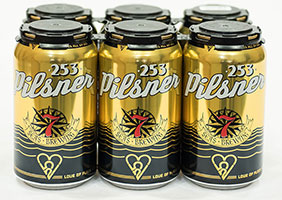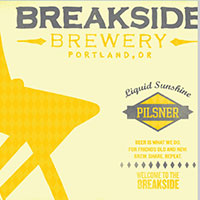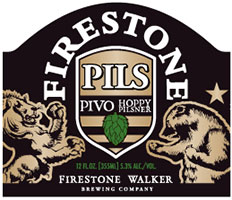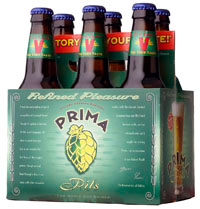In the world history of beer, pilsners are relatively recent. Around 1840, eons before marketers invented “drinkability,” Czech brewers in Bohemia created pilsner, a light beer that didn’t taste like spongewater. The primary source of the innovation was the use of bottom-fermenting yeasts, which yielded a livelier, more consistent beer than the traditional top-fermented brews. Today, the best pilsners are still found in continental Europe, partly because of demand and partly because it’s home to the style’s signature Saaz hop, Pilsen’s soft water and crackery, paler malt. German and Bavarian styles tend to emphasize bitterness and spicy hop flavor. But stateside, craft brewers borrow freely from both approaches and put a more personal flare — typically more hops — on the style. United States craft brewers have refused to let mass-produced, adjunct-laden, flavorless-at-best light lagers be the standard and Peaks and Pints salutes that effort with our Craft Beer Crosscut 3.4.17: A Flight of American Pilsners.
 7 Seas 253 Pilsner
7 Seas 253 Pilsner
5.2% ABV, 32 IBU
7 Seas Brewing co-owner and head brewer Travis Guterson brewed more than five test batches, with different hops and different malts, to dail-in the recipe he liked. “Travis settled on Sterling and Cascade hops,” says his business partner, Mike Runion. “It’s a Northwest interpretation of a pilsner.” Guterson and Runion brewed the 253 Pilsner with Northwest Pale and Pilsner malt, hopped with said hops, for a 100 percent Washington, refreshing, dry and crisp authentic premium pilsner.
 Breakside Liquid Sunshine
Breakside Liquid Sunshine
5.2% ABV, 35 IBU
Breakside Brewery‘s Liquid Sunshine hits the nose with bready, grainy pale malt, white soup crackers, subtle apple and pear fruit notes, slightly edgy yeast, and peppy leafy, herbal, and rather floral hop bitters. Yet, it glides in with grainy malt flavors that build a solid, biscuit foundation, on which is perfectly balanced a classically floral German hop profile. It’s not a loud mouth. It’s not trying to steal your girlfriend. It’s just a very well balanced German-style pilsner — a clean, thirst-quenching lager.
 pFriem Pilsner
pFriem Pilsner
4.9% ABV, 38 IBU
pFriem Pilsner may be the lightest beer we’ve ever seen. It pours with a delicate green tint, a fluffy white head, and a crystal-clear complexion. Pastoral aromas of flowers and meadow grains combined nicely with a typical maltiness to provide what we could only describe as a “pilsner” scent. The taste is the best part, though, with a deep dryness at the back of the mouth and the faint minerality that’s so crucial to a pilsner. pFriem’s Pilsner goes down easy as a breeze.
 Firestone Walker Pivo Pils
Firestone Walker Pivo Pils
5.3% ABV, 40 IBU
Firestone Walker Pivo Pils is a smooth operator. It has a silky, foamier head than most other pilsners, while also sporting the lightest consistency and color, making it look a little like sparkling grape juice. Fruit scents like apple and tangerine tickle the nose, balanced by a tart, peppery detail that rounds out the sweetness nicely. After a potent aroma, the taste was deceptively subtle, balanced and clean. Pivo is astonishingly — almost dangerously — drinkable.
 Victory Prima Pils
Victory Prima Pils
5.3% ABV, 44 IBU
Victory Brewing Co. is all in. The Pennsylvania brewery is committed to finding the best natural ingredients possible, a dedication that extends to their exclusive use of whole flower hops, rather than the pellets used by most breweries. The resulting brews are more delicate and nuanced, and the Prima Pils is no exception. The nose contains elusive, variable scents, none of which overpowers any of the rest; earthy, chalky, and nutty notes all complement each other. The taste moves us into the woods of Pennsylvania, with an open flavor that is as subtle as it smells. Think of a small, comforting cottage in a forest clearing, and you’ll get a sense of the Prima.

